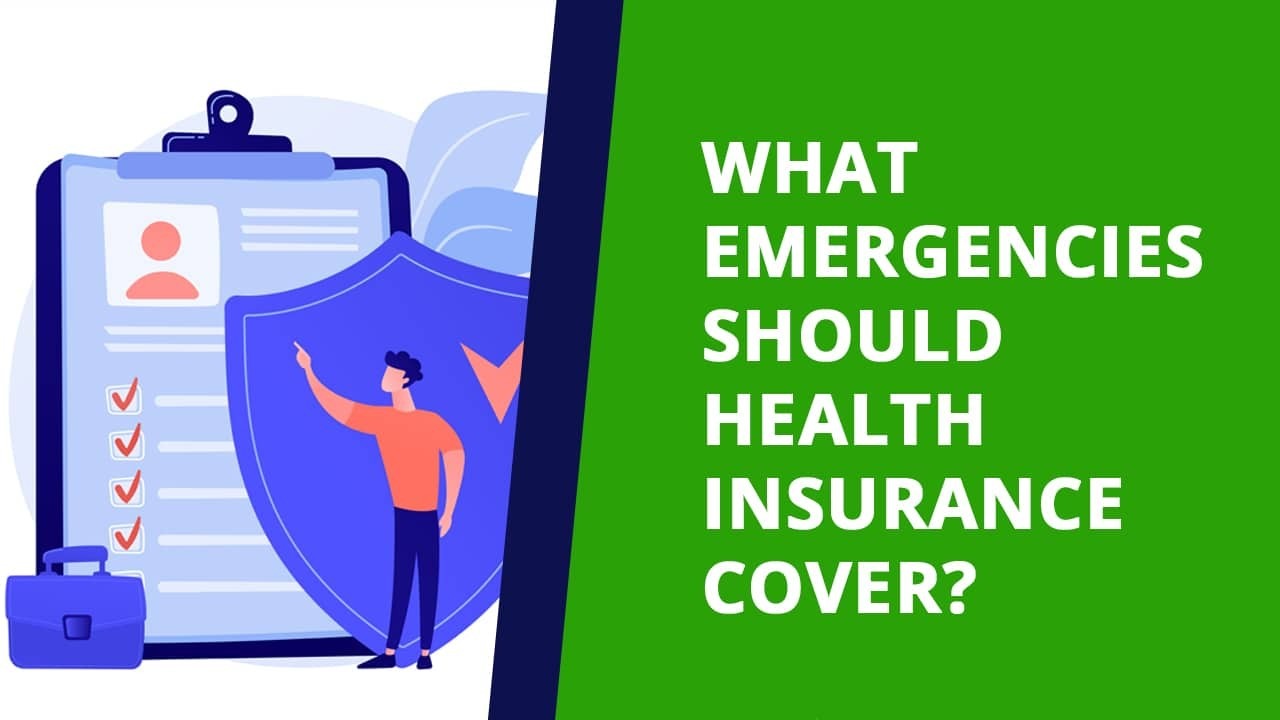How to Know If Your Insurance Policy Will Cover Emergencies
In the unpredictable currents of life, emergencies are an unfortunate inevitability. Whether it’s a sudden illness, an unexpected accident, or a critical incident requiring immediate attention, the financial implications can be overwhelming without adequate protection. This is where insurance, designed to mitigate risk and provide a financial safety net, becomes indispensable. However, the true value of an insurance policy in an emergency hinges on a nuanced understanding of its specific terms and conditions. For the discerning individual, approaching personal risk with the same analytical rigor applied to business continuity planning, knowing “How to Know If Your Insurance Policy Will Cover Emergencies” is paramount to ensuring genuine security when it matters most.
The concept of “emergency” itself can sometimes be a gray area in insurance parlance, varying subtly across different policy types (health, travel, auto, home) and even between different insurers. Generally, an emergency is defined by an acute medical condition that, in the absence of immediate medical attention, could reasonably be expected to result in serious jeopardy to the patient’s health, serious impairment to bodily functions, or serious dysfunction of any bodily organ or part. This definition is critical, as it often distinguishes a true emergency (which policies are designed to cover) from an urgent but non-life-threatening condition that might be better suited for an urgent care center or a regular doctor’s visit. Understanding this distinction is the first step in aligning your expectations with your coverage.
The most direct way to ascertain emergency coverage is to delve into your specific policy document. This might seem like a daunting task, given the often-dense legal language, but it is the definitive source of truth. Look for sections explicitly detailing “Emergency Services,” “Emergency Medical Care,” “Ambulance Services,” or “Hospitalization.” These sections will outline what services are covered, under what circumstances, and any associated financial responsibilities on your part, such as deductibles, co-pays, or co-insurance. For example, a health insurance policy will specify coverage for emergency room visits, diagnostics performed in an emergency setting (like X-rays or lab tests), and potentially ambulance transportation. For business travelers, a travel insurance policy might detail coverage for emergency medical evacuation, which is crucial when receiving care in a foreign country like Thailand.
Beyond the explicit coverage clauses, attention must be paid to critical qualifiers and limitations. **Network restrictions** are a prime example, particularly with health insurance plans like HMOs (Health Maintenance Organizations) or PPOs (Preferred Provider Organizations). While many plans offer some form of coverage for out-of-network emergency services, the out-of-pocket costs can be significantly higher if the emergency facility or providers are not part of your plan’s approved network. However, it’s important to note that many regulations, such as the No Surprises Act in the United States, aim to protect patients from unexpected out-of-network bills for emergency services. Even with such protections, understanding your plan’s specifics can still help you navigate the system more effectively post-emergency. Always check if your policy requires you to use in-network hospitals for *post-stabilization* care, or if it has specific rules for follow-up.
**Pre-authorization requirements** are another vital aspect. While true medical emergencies typically bypass the need for pre-authorization (as the immediate threat to life or limb takes precedence), some policies may require notification to the insurer within a specific timeframe (e.g., 24 or 48 hours) after an emergency admission. Failing to adhere to such notification clauses could lead to reduced coverage or even denial of a claim. It’s a critical detail that can easily be overlooked in the stress of an emergency, but one that can significantly impact your financial liability. This is similar to the reporting requirements in business contracts; missing a deadline can have severe consequences.
For **travel insurance policies**, the scope of emergency coverage can be highly nuanced. Standard travel insurance may cover emergency medical expenses incurred abroad, but the limits can vary wildly. Crucially, many policies exclude coverage for pre-existing medical conditions unless a specific waiver or add-on is purchased. If you have a chronic health issue, confirming that your travel insurance explicitly covers emergencies related to that condition is non-negotiable. Furthermore, coverage for high-risk activities (like extreme sports or adventure tourism) is almost universally excluded from standard policies and requires specialized riders. Understanding these exclusions is particularly relevant for those exploring the diverse landscapes and activities outside of standard city life in Bangkok.
**Deductibles, co-pays, and co-insurance** are the financial pieces of the puzzle that dictate your out-of-pocket expenses. Even when an emergency is covered, you will typically be responsible for these amounts. Your deductible is the amount you must pay before your insurance begins to cover costs. Co-pays are fixed amounts you pay for certain services (e.g., an emergency room visit). Co-insurance is a percentage of the cost you are responsible for after meeting your deductible. Knowing these figures in advance helps you prepare for the financial aspect of an emergency, preventing “surprise bills” even for covered events.
The most proactive steps to ascertain your emergency coverage involve direct communication and diligent record-keeping. Firstly, **contact your insurance provider’s customer service or member services department.** The phone number is usually on your insurance ID card. Ask specific questions about emergency room visits, ambulance services, hospital stays, and out-of-network emergency care. Get clarification on what constitutes a “medical emergency” in their terms, and inquire about any notification or pre-authorization requirements.
Secondly, **request a copy of your Summary of Benefits and Coverage (SBC).** This standardized document, required by law in many regions, provides a clear, concise overview of what your plan covers and how much you can expect to pay for various services, including emergencies.
Thirdly, **keep your insurance card and a summary of your key policy details readily accessible.** In an emergency, you may not be in a position to retrieve this information yourself. Having it in your wallet, on your phone, or shared with a trusted family member can expedite care and streamline the claims process.
In conclusion, relying on assumptions regarding emergency insurance coverage is a precarious gamble. For the modern professional who values preparedness and risk mitigation, understanding “How to Know If Your Insurance Policy Will Cover Emergencies” is not a passive exercise but an active, intelligent engagement with your protection plan. By diligently reviewing policy documents, asking targeted questions, understanding financial responsibilities, and knowing the nuances of “emergency” definitions, you transform an abstract safety net into a concrete, reliable shield against the financial shocks of unforeseen health crises. It is a strategic imperative that ensures peace of mind and the ability to focus on recovery, knowing your financial well-being is genuinely protected.







